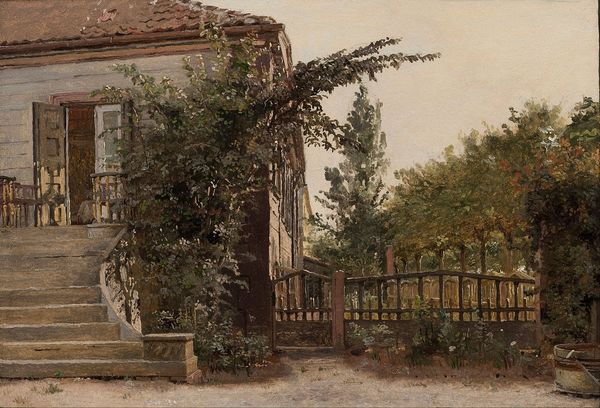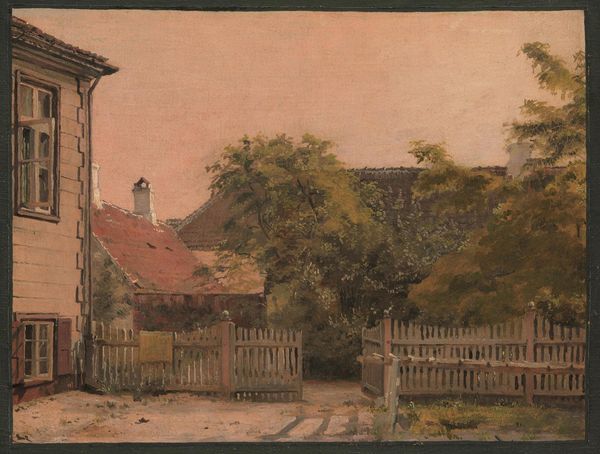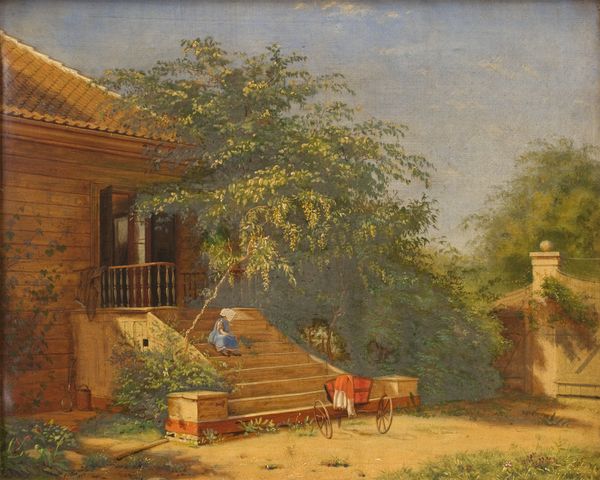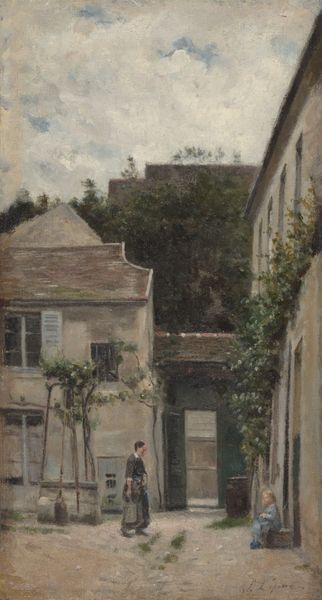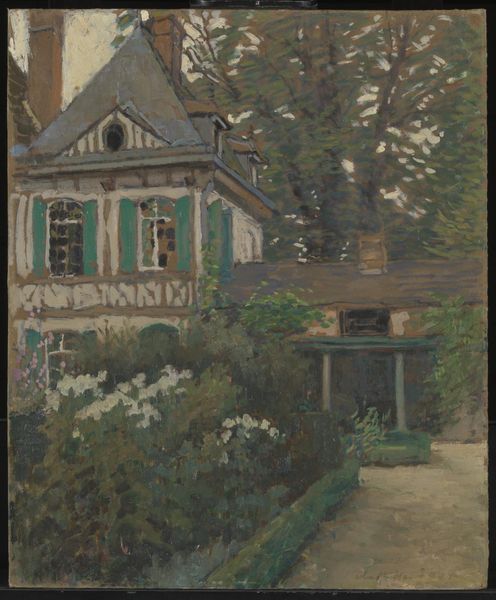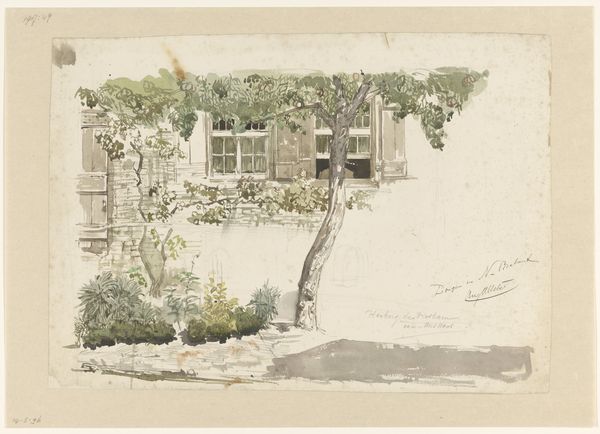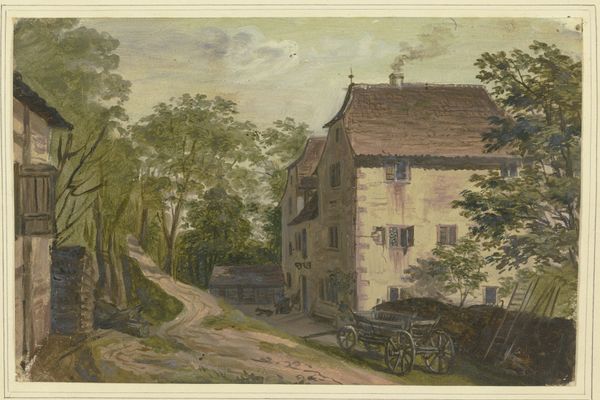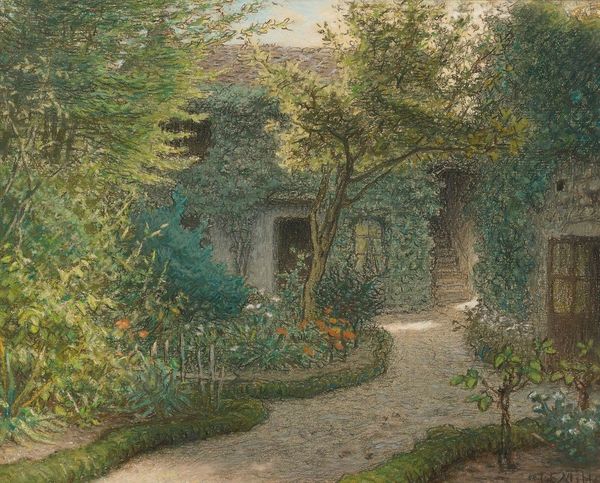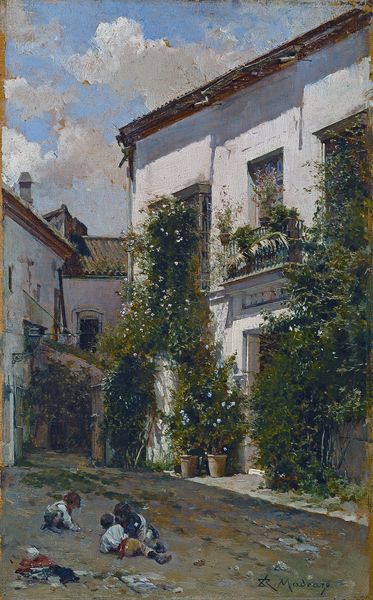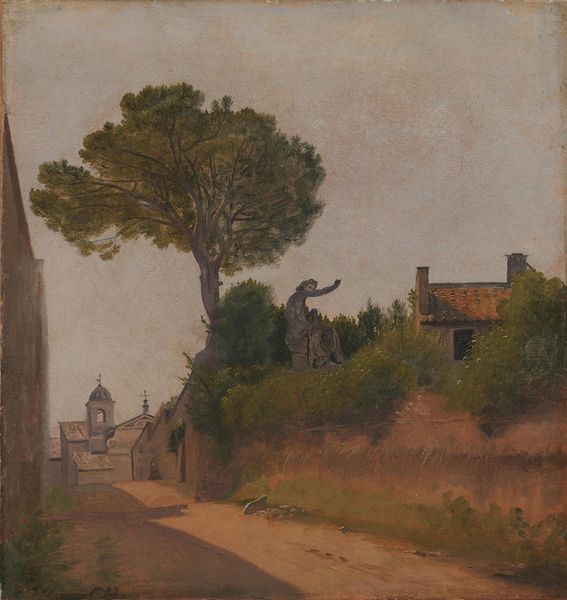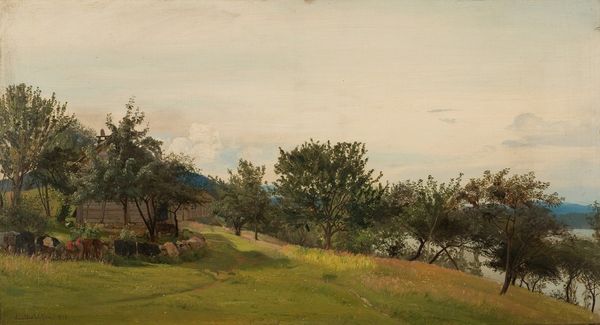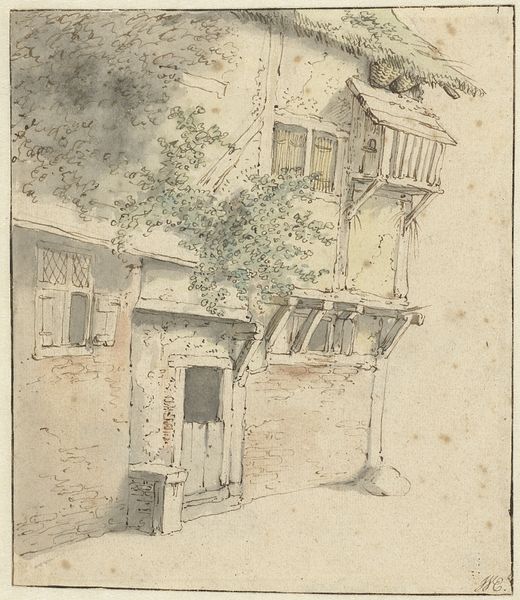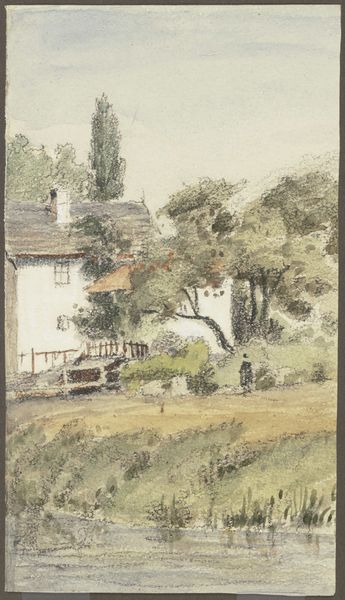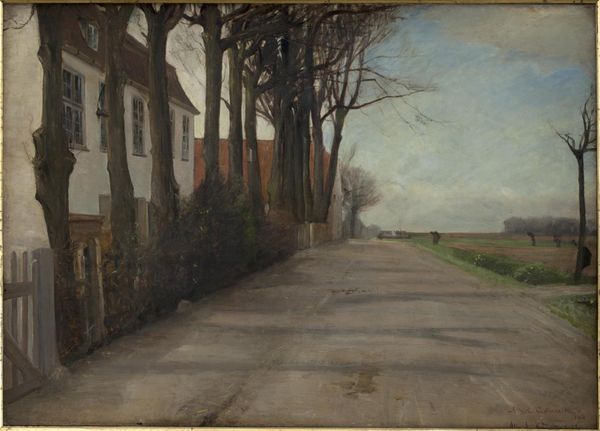
The Garden Steps Leading to the Artist's Studio on Blegdammen, Copenhagen 1841 - 1844
0:00
0:00
paper, watercolor
#
landscape
#
paper
#
watercolor
#
romanticism
#
genre-painting
#
watercolor
Dimensions: 22.5 cm (height) x 33 cm (width) (bladmaal), 37.2 cm (height) x 46.1 cm (width) x 5 cm (depth) (Brutto)
Christen Købke made this tranquil scene of his Copenhagen studio using oil on paper. The traditional medium of oil paint is skillfully employed to capture the light, texture, and atmosphere of a garden on Blegdammen. Look at how the artist has built up the image through layers of brushstrokes, lending a tangible depth to the foliage. The materiality of the paint, thick in some areas and thin in others, directly influences the appearance, conveying the sun-drenched warmth of the setting. Consider the social context: Købke was painting during the Danish Golden Age, a period of relative peace and prosperity, which allowed for artistic exploration of everyday life. The painting’s intimacy shows a focus on personal space, labor, and the consumption of leisure time. It reminds us that the true value of art lies in the thoughtful manipulation of materials to communicate our shared human experience, blurring the lines between fine art and craft.
Comments
statensmuseumforkunst almost 2 years ago
⋮
While Købke would usually adhere to the prevalent norms governing the choice of motif and composition in his large, fully finished paintings, he was far more open towards unconventional artistic solutions in the small-scale private studies he painted entirely for his own pleasure. In this painting of garden stairs he evinced an unheard-of boldness in his choice of motif, angle, and cropping, and his manner of painting is much more free than in his large paintings. Even though he was painting his own home, he barely conveys any impression of the house itself; the rambling tree by the stairs is the key element of the painting - alongside, that is, the accurately observed sunlight falling upon the façade and tree, in through a window to end upon the open door. In studies such as this Købke went to greater extremes than any of his contemporary colleagues and the painting has no parallels within the Danish art of the time.
Join the conversation
Join millions of artists and users on Artera today and experience the ultimate creative platform.
statensmuseumforkunst almost 2 years ago
⋮
The motif shows a part of Købke’s parents’ farm, where Købke had his own self-contained flat. The point of view adopted here only offers a limited impression of the house, making the sunlit, sprawling tree the main motif of the painting.After the death of Købke’s father in 1843 Købke stayed at Blegdammen for two years until his mother had to sell the property in 1845. In all likelihood it was around this time that Købke began painting the farmhouse itself. Presumably to have something by which to remember a house that had been his home for twelve years he selected a number of motifs that were closely linked to his everyday life; all of these belong to the part of the house in which he had his own self-contained quarters. One of the scenes painted was this image of the garden steps leading up to his studio. The point of view adopted and the cropping of the motif are both strikingly off-kilter. The gables and stairs are cut off by the edge of the image, and the façade towards the road is heavily foreshortened. The depiction is entirely unrepresentative and offers only a limited impression of what the house looked like; a somewhat confusing choice in light of what we presume Købke’s intentions to have been. It may seem as if the sunlight determined the angle chosen. The gables are in the shade whereas the façade is strongly lit, and rays of sunlight fall upon the garden door and on the lush tree. This gives the sunlight an astonishing intensity. The roof tiles in the left hand side of the painting have not been painted completely in. Perhaps the artist did not have time to finish the painting before moving, which makes 1845 a likely dating. As a companion piece for this painting he also did a canvas of a corner of the house (as viewed from the garden); both paintings have a dark green painted frame, which tells us that they have been hung without frames. According to a note, now lost, on the back of the painting it was the property of the artist’s sister, Juliane Købke, as far back as 1847.
statensmuseumforkunst almost 2 years ago
⋮
While travelling in Italy Købke achieved a much greater degree of painterly freedom in his studies than before, particularly in his painted studies from Capri (right). These images have a sketch-like quality not found in other Danish painters. Købke’s new style of painting had a knock-on effect on the studies done near his home on Blegdammen after his return from Italy. In the painting of the garden steps he evinces an unheard-of boldness in his choice of motif and angle – and in his cropping of the scene. We barely get an impression of the house; the gnarly tree by the steps is the key element of the painting together with the beautifully observed sunlight hitting the façade and tree, falling in through a window and upon the open door. The painting has no parallel in Danish art of the period.
